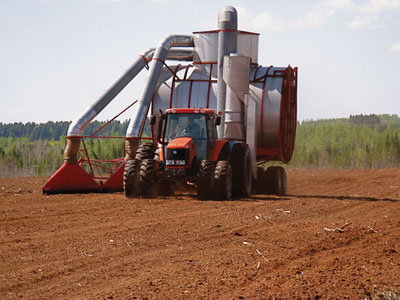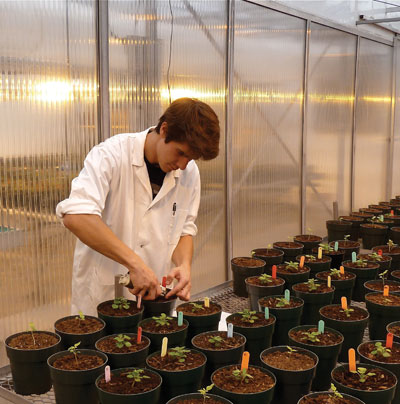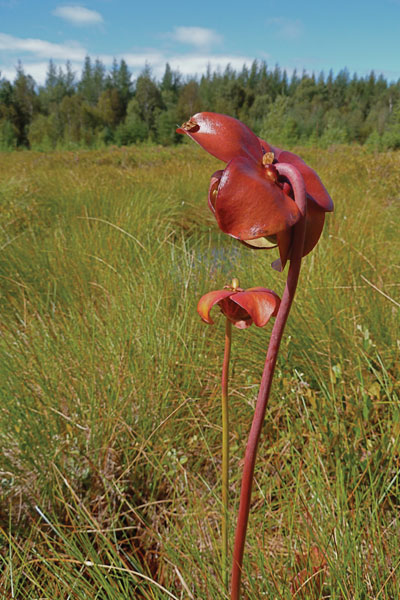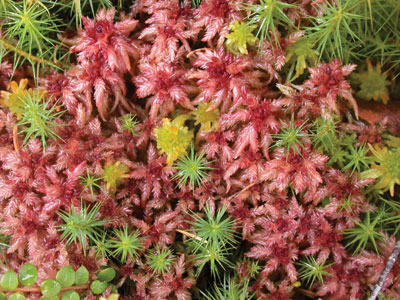
Features
Business
Grower Profiles
Peatlands’ sustainability
August 21, 2012 By Québec Peat Moss Producers Association
New criteria for evaluating products and services have become the norm
in just about every market sector – purchases can be “responsible,”
“eco-friendly,” “green,” “organic,” and so on.
New criteria for evaluating products and services have become the norm in just about every market sector – purchases can be “responsible,” “eco-friendly,” “green,” “organic,” and so on. These concepts are now among the factors that influence consumers when they buy plants.
 |
|
| Peat harvesting Advertisement
|
To meet the demand of clients and to ensure production techniques meet the most rigorous standards, peat moss producers have developed a number of initiatives that can also help the horticulture industry.
Sphagnum peat moss is partially decomposed organic matter formed mainly of sphagnum moss and other semi-aquatic plants. Peat forms slowly in wetlands as vegetation decomposes. An anaerobic environment (an environment with little oxygen) is ideal for peat formation.
Peat is found in many growth substrates used in horticulture and agriculture production. Peat is a popular choice because it has exceptional characteristics for growing:
- Increase aeration of heavy soils.
- Increase cation exchange capacity.
- Increase soil buffering capacity.
- Provide organic matter free of any contaminants (no heavy metals or pesticide residue).
ENVIRONMENTAL INITIATIVES TO MANAGE PEATLAND RESOURCES
■ Even though peatlands are widespread in Canada (119 million hectares), the Canadian peat industry is conscious that peat and peatlands are a natural resource that must be managed responsibly.
 |
|
| Peat moss is subject to extensive quality testing by producers;
|
Peat producers have been proactive on this front for many years. In 1992, producers asked a university group to develop information and techniques concerning peatland restoration. Today, the restoration of peatlands forms an integral part of production site development plans.
Although the rate of renewal is too slow for peat to be officially classified as renewable, peatland ecosystems have the capacity to regenerate their ecological functions within a period of 10 years following restoration. The most recent studies show that the practices developed produce the following results:
- Return of sphagnum moss covering within five years.
- Growth rate of sphagnum on restored sites equal to or greater than that of natural peatland.
- Return of site’s carbon capture capability in 10 years.
Moreover, since 2008, significant projects have been completed that shed new light on the peat production cycle, for example:
 |
|
| Restored peatland in Québec.
|
Environmental Life Cycle Analysis (eLCA): An (eLCA) has been conducted and has become central to the development of the peat industry’s sustainability programs. The eLCA paints a quantitative portrait using impact categories recognized by the international scientific community.
Hot spots in the production cycle were targeted, allowing producers to prioritize investments according to the environmental impact of each element of production.
The results are available on the following website: http://www.tourbehorticole.com/en/responsible-production/analysis.php .
Certification: To assist with the ongoing improvement efforts of individual businesses, the peat industry supported a new certification program that has been developed by an independent party, Scientific Certification Systems (www.scscertified.com ).
 |
|
| Sphagnum mosses.
|
Based on ISO standards related to product quality (9001) and environmental management (14001), the VeriFlora® Responsibly Managed Peatland certification covers environmental protection, social commitment and product quality. There are specific requirements that must be met by peat producers to obtain over and above the general VeriFlora® certification criteria (www.veriflora.com ). The majority of the Canadian peat moss producers are certified.
The criteria specific to peat producers are set out in the document that can be accessed at the following website: http://www.tourbehorticole.com/en/pdf/veriflora.pdf .
In conclusion, Canadian peatlands are managed in a way that ensures ongoing improvement for the benefit of the communities in which harvesting takes place, the users of this exceptional organic matter (the growers), and all of the various parties related to horticulture.
A presentation on the advantages of certification and the eLCA process for the horticulture industry will be held during this year’s Canadian Greenhouse Conference in Niagara Falls on Oct. 3 at 3 p.m.
(This feature was supplied by the Québec Peat Moss Producers Association.)
Print this page